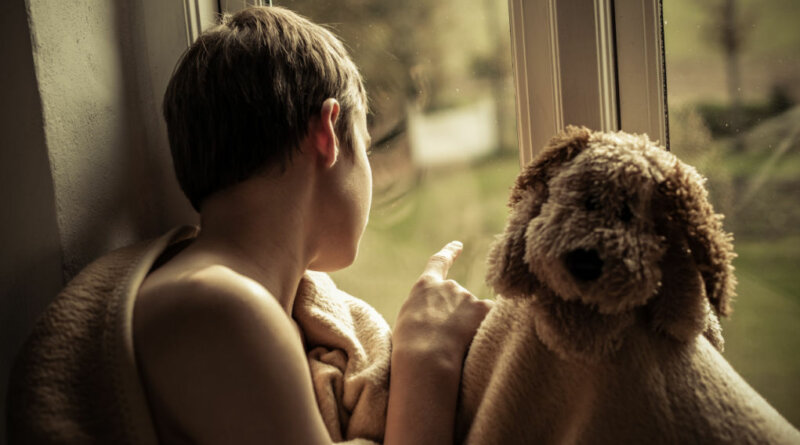How To Help a Child Cope With Losing a Pet – Top Dog Tips
The loss of a pet—whether through death or separation—can be the cause of intense grief for people of all ages.
This period of deep psychological strain is especially difficult for children. Unfamiliar with the pain of loss and bereavement, most children feel confused after the loss of a pet.
Since pets are like family members, their deaths can disturb family functioning as each individual makes their way through grief.
Mourning the death of your loved one collectively as a family is crucial for the healthy emotional development of children.
In this article, we will discuss:
- Things you should do when your child loses a pet.
- Factors that may affect a child’s responses to death.
- When and how to let your child say goodbye to their pet.
Remember: You are not alone, even if it may feel like that. Opening yourself to social and familial support may be healing as it helps strengthen the bond you share with those around you.
Things You Should Do When a Child Loses a Pet
Losing a pet will lead to an abrupt confrontation with unfamiliar emotions for your child. There is no immediate cure or remedy for the misery.
It’s unavoidable and the helplessness in the eye of the storm is overwhelming.
While you may understand the nuances of loss, your children need help processing what has happened.
They might not understand what happened or why they can’t play with their adorable puppy anymore.
Communication is fundamental to emotional processing and regulation during this time.
Remember: This may be the first time your children deal with the concept of death. Your assistance during this crucial period will be a key component of their development as individuals.
Here we have compiled a list of things you should focus on to help your child deal with the loss in a healthy way:
1. Keep Communication Direct and to the Point
The words you use to narrate the situation to your child may stick longer with them than you realize.
It may ring in their ears as they grow older and help in dealing with future losses.
Grief and Grieving by Elisabeth Kübler-Ross & David Kessler describes denial as the first stage of loss. While essential for survival, the book considers it a numbing and shocking state in which everything feels meaningless.
“We wonder how we can go on, if we can go on, why we should go on”.
Since diversion from the topic is one of the easiest manifestations of denial, learn to not shy away from difficult conversations. Explain what happened to their pet and that grief is natural after the loss of a loved one.
Refrain from dishonest answers like the dog “went to sleep”, or “went away” to divert the topic away from the theme of the discussion: death.
This will allow your child to process loss in a healthy way instead of falling into a state of paralyzing fear every time you take a nap or go out.
Remember to keep the conversation centered on them instead of you. Keep it brief and to the point, and only disclose what is necessary.
Keep unsettling details to a minimum but try your best to answer every question.
2. Give Them Time To Process Their Grief
Grief has no timeline. There is no right or wrong way to process it. Every individual responds differently to the same circumstances.
While one may shut themselves off from the world, another may be more open to social support for assistance.
It all boils down to their distinctive personality and upbringing. Your children will exhibit different reactions to the loss of a pet.
Refrain from comparing the responses of one child to another. This will minimize issues relating to self-esteem and self-image as they learn to validate the overwhelming emotions they may be feeling.
Inform their teachers and extended family members regarding the situation. Even if they perform poorly on a test or exam, give them time to recover from the trauma.
Pet grief is real and affects every person differently. The least we can do is not invalidate their pain through words such as “it was only an animal”, “it’s in a better place”, “I know exactly how you feel” or even “don’t feel bad, everything happens for a reason”.
Instead, shift the narrative to words such as “your feelings are normal” and “take all the time you need” to create an atmosphere of empathy and understanding.
Encourage them to ask any questions they might have and listen to them without criticism or judgment when they feel comfortable enough to open up.
Chances are, they might be repetitive in their inquiries. Practice patience as you learn to navigate the grief together as a family.
Read the article Grief Over Pet Loss to learn how the loss of a pet can lead to immense heartache.
3. Find Healthy Outlets for Emotional Expression
“Grief is just love with no place to go”, wrote Jamie Anderson.
When you lose someone close to you, the loss of companionship and love can be overwhelming.
When kids first encounter the inevitability of death, it can take a toll on their mental and emotional well-being.
What do they do with all the time they spend playing fetch, tug of war, and hide and seek with their beloved pet?
The enormous presence of time with nothing to do will only serve as a bitter reminder of what they’ve lost.
Whether it’s sports, music, writing, singing, or any other hobby, make sure to find something your child will enjoy.
You can also get them pet loss journals. These will enhance their emotional regulation through healthy expression.
A few of our recommendations include:
Filled with pictures and encouraging prompts, these journals will allow your child to explore the depth of their emotions and eventually get closure.
4. Hold a Memorial
A memorial for your pet can take any shape or form you like.
The essence of the matter is this: death is lonely. And the only way to make it less isolating is through reminiscing about the time spent together as a family.
This will make your child—and also you—feel less alone.
Knowing that you’re not the only one feeling this deep despair can help alleviate some of their anxiety.
We recommend the following activities to guide you through the process:
- Having a small heartfelt ceremony after burying the pet
- Talking about your memories
- Making a scrapbook with pictures
These activities will allow your child to navigate their journey through grief.
5. Take a Break Before Getting Another Pet
Taking some time after an intense psychological strain is essential for one’s well-being. Getting another pet immediately may aggravate the pain and grief.
Your family will feel helpless, tense, and fearful of when they’ll have to part with the new pet.
This can be emotionally unpleasant as everyone starts feeling resentment and anger creeping up out of nowhere.
Since there is no timeline for grief, there’s no fixed recommended waiting period either. Just make sure you and your children have overcome the grief in a healthy manner.
Be patient with your child as they get clingy or distant. It is their way of dealing with loss.
Try reassuring your children that you’re not going anywhere and will be there for them.
Factors That Affect a Child’s Responses to Death
Every individual has a unique composition of nature and nurture that affects how they respond to various circumstances.
While one may go down a spiral of depression and resort to silence, another may be more vocal about their pain.
Learning which factors affect these reactions can be crucial to understanding and helping your child cope with the grief.
Apart from individual differences, components that may influence their behavior and attitude include:
Age and Stage of Development
Children under the age of 5 might be unable to wrap their heads around the idea of death. They may feel confused and face problems adjusting to this newfound absence.
They will choose to suppress if you do not encourage them to talk about their feelings.
On the other hand, older children may already have a fair idea of death. They will comprehend its irreversibility and what it entails.
You must communicate honestly, encourage them to talk about their thoughts, and answer any questions they might have.
Level of Attachment to the Pet
Every child may have a different level of affection and fondness for their cute and loyal pet.
While one may be slightly indifferent, another may have relied heavily on companionship. Not being able to play with their puppy anymore will affect their mental health adversely.
How close they were to the pet may be a significant determinant of how their response to death.
Someone who spent every day with them may naturally feel the loss more than someone who only played with them on weekends.
Remember: Comparing levels of pain is not the motive here. We are merely presenting a factor that may influence the depth of their loss as they adjust to a new lifestyle without their buddy.
Prior Experiences With Loss
Children who have experienced the loss of a loved one before may understand the concept better than someone who has never faced it.
They might understand the nuances of grief and the coping mechanisms most people utilize.
It is important to remember that understanding may not be helpful sometimes. This is especially true for children.
While they may wrap their heads around the “what” and “how” the unanswered “why” will still be an immense cause of suffering.
Be careful while helping them navigate the cycle of life. Be honest and empathic as they learn to move on from this trauma.
Remember: Patience is key here. Your child knows less than you do. Try to look at things from their lens and only inform them of things they can handle at a young age.
Should You Let Your Child Say Goodbye to Their Pet?
Your child’s last encounter with their beloved pet will dictate their beliefs about the world around them.
If you communicate effectively and politely, they’ll learn emotional regulation. If you keep them in the dark, they’ll learn doubt, confusion, and skepticism.
We understand your hesitance in not allowing your kid to see their pet in this condition. But intentionally shielding them from the pain may do more harm than good.
Children of all ages derive great comfort, joy, and companionship from their beloved doggo.
They share an emotional attachment and think of a pet as a family member.
Sheltering them from this devastating yet inevitable experience will only increase their confusion regarding what happened.
It is better to know that pain and grief are natural instead of stifling emotions and going into denial and suppression.
So, yes. You should allow your children to say goodbye to their pets.
But also, mentally prepare them beforehand regarding what they’ll see when they look at their pet.
This YouTube video will give you a step-by-step visual guide to help you through the process:
How to Help a Child Cope with Losing a Pet: Key Takeaways
There is no fixed timeline for grief. While one individual may seem to move on within a couple of months, another may require years.
While symptoms of intense sadness may persist for up to 1-2 months, they can fluctuate for the next 6-12 months.
The death of a loved one changes everyone differently. One may require professional help if it persists and disrupts daily living.
Remember to be kind to yourself and to your children as you navigate this time. Practice empathy, and don’t force unrealistic expectations.
Your family deserves all the social support and time they need!
READ NEXT: What Happens to Pets When Their Owners Face Death: An Overview









